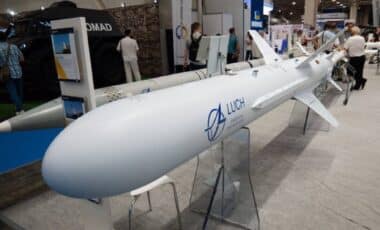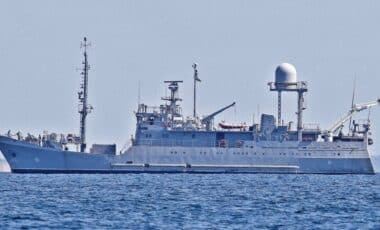The aircraft carrier USS Nimitz has returned to the South China Sea amid rising tensions over territorial claims in the region. Satellite images confirm the warship’s operations just northeast of Scarborough Shoal, a disputed maritime feature long under Chinese control.
This deployment marks what may be the final overseas mission of the Nimitz, one of the United States Navy’s nuclear-powered carriers, before it is decommissioned. The vessel’s presence underscores Washington’s sustained military posture in the Pacific as Beijing simultaneously expands its own naval operations, including the deployment of two Chinese aircraft carriers in the same broader region.
The Seventh Fleet, responsible for forward-deployed operations in the Pacific and Indian Oceans, continues to maintain what it describes as “combat-credible forces” alongside U.S. allies. According to a statement cited by Newsweek, the fleet’s aim is to protect security and promote a free and open Indo-Pacific, a phrase frequently used by U.S. officials to counter Beijing’s expansive territorial claims.
This ghost submarine operates without crew, without sound, without a trace — is it already on a secret mission?
Renewed Operations Near Scarborough Shoal
Satellite imagery analyzed by open-source intelligence researcher MT Anderson revealed that the USS Nimitz was operating approximately 167 miles northeast of Scarborough Shoal as of June 8. The maritime feature, which lies about 138 miles west of Luzon Island in the Philippines, has been under Chinese control since 2012. Manila refers to the area as the “West Philippine Sea,” a term that reflects its exclusive economic zone extending 230 miles from its coastline.
The vessel is part of Carrier Strike Group 11 and is believed to be accompanied by two Arleigh Burke-class destroyers and potentially one Australian Hobart-class vessel, as reported through analysis of the satellite data. Photographs released by the U.S. Navy on June 2 confirm the Nimitz was active in the South China Sea on that date. The Navy described the deployment as a demonstration of commitment to regional stability.
Strategic Timing for Final Overseas Mission
The Nimitz began its current tour in late March with a transit through the Strait of Malacca before returning to the South China Sea in late May. This mission is likely the carrier’s last abroad before decommissioning. U.S. Navy Rear Admiral Maximilian Clark, who commands the Nimitz Carrier Strike Group, emphasized the value of forward operations. In April, he stated that such missions refine the Navy’s capacity to maintain persistent and capable forces, ready to respond to crises.
This movement comes amid heightened naval activity by China, which currently has two aircraft carriers operating in the western Pacific. The Chinese navy remains the largest globally by hull count, further intensifying the military balance in the region.
Second Carrier Joins Broader Pacific Presence
In parallel with the Nimitz, the aircraft carrier USS George Washington is also active in the western Pacific. On June 4, the George Washington returned to its forward-deployed base in Yokosuka, Japan, after routine operations in nearby waters. Just days later, on June 9, it was spotted departing the same base, signaling the beginning of its next patrol.
According to images taken by a local ship spotter, this deployment marks the first full patrol for the George Washington since its return to Japan nearly eight months ago. Its activities align with a wider U.S. Navy strategy to maintain a visible and operational presence across key maritime corridors in the Pacific.








